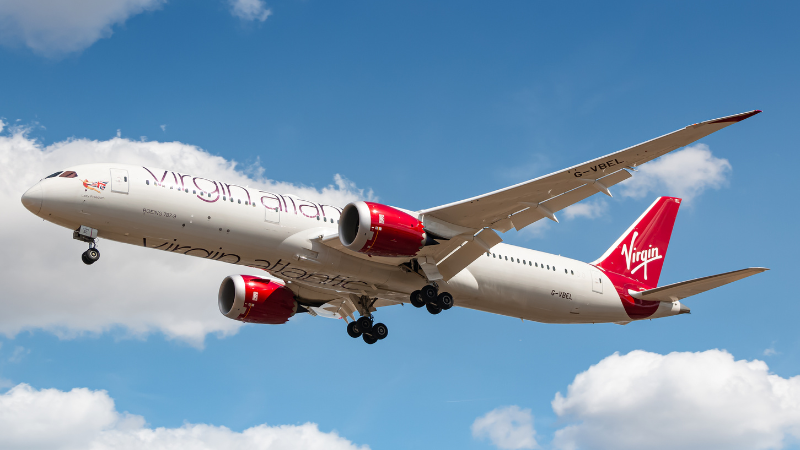

Sustainable aviation fuel (SAF) is one of several options under investigation for the decarbonisation of air travel. Granted, hydrogen and electric aircraft might be more “futureproof”, but SAF presents a practical stop-gap while the technology is under development.
Several recent developments have marked an important step towards the viability of SAF in long-haul aviation. We’ll discuss them below, along with what they mean for the wider industry.
In late November, Virgin Atlantic flew the world’s first commercial flight powered by 100% SAF. The test was supported by the UK government as well as private partners, including Rolls-Royce, Boeing, the University of Sheffield and Imperial College London.
The historic flight left London Heathrow and landed at JFK in New York. Importantly, it demonstrated that fuelling commercial aircraft with 100% SAF is completely possible. According to Virgin Atlantic, the exact composition of the fuel was 88% Hydro-processed Esters and Fatty Acids and 12% Synthetic Aromatic Kerosene. These were processed from sources including waste fats and plant proteins, fibres, and oils.
One of the main advantages of SAF is that, for the most part, it can be used in place of traditional kerosene fuels in existing jet engines. This means it’s arguably the most viable solution for the short- and mid-term decarbonisation of commercial air travel.
However, there are two main issues preventing its rollout at the scale and speed required. First, industry regulations only permit current flights to be fuelled by a maximum of 50% SAF. Of course, this is something that can be changed fairly easily once its viability is demonstrated.
Second, and perhaps more importantly, is the simple lack of SAF. Virgin Atlantic states that it currently makes up 0.1% of global aircraft fuel, and there just aren’t enough resources to produce the quantities needed. But this is where our other recent development comes into play.
Not long before Virgin Atlantic’s flight, the UK government announced a new round of funding for advanced fuels. Within the £135 million fund, £53 million was awarded to nine British companies to develop and scale up production of SAF. In short, this is exactly what’s needed to make it a viable fuel source.
The companies approach SAF production from plenty of different angles, an important development for future scaling endeavours. For example, Abundia plans to use pyrolysis and hydrotreatment to convert sawmill and forestry waste into SAF. Another company plans to convert captured gaseous CO2 and green hydrogen into liquid SAF.
Considering the sheer lack of SAF, this round of funding could see the UK capable of producing 810,000 tonnes annually – the two companies mentioned above could be capable of producing 70,000 tonnes combined.
By 2035, the government hopes this investment will have created around 10,000 jobs in the green energy sector and added £1.8 billion to the UK economy. Perhaps more importantly, though, it’ll help us to meet our current goal of supplying 10% of the aviation industry’s fuel with SAF.
As most of us know, shifting away from fossil fuels isn’t a quick process. This is evidenced in the timelines given above; we’re looking at another 10 years before we can increase SAF’s industry share to 10%. Even so, this is a significant dent – equivalent to around 2.7 million tonnes of CO2 a year. Hopefully, in 10 years’ time, we’ll also be much closer to the rollout of hydrogen and electric aircraft.
